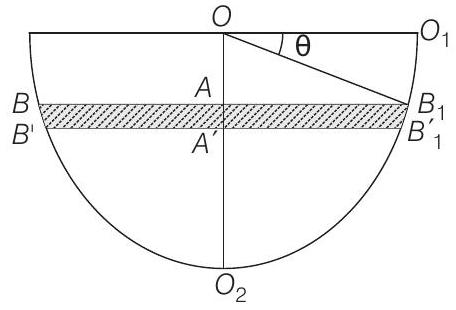Differential Equations 3 Question 11
11. A hemispherical tank of radius
(2001, 10M)
Hint Form a differential equation by relating the decreases of water level to the outflow.
Show Answer
Answer:
Correct Answer: 11.
Solution:
- Let

Also,
Now, outflow rate
Where,
Thus, volume flowing out in time
We have,
Let the time taken to empty the tank be
Then,
Let






